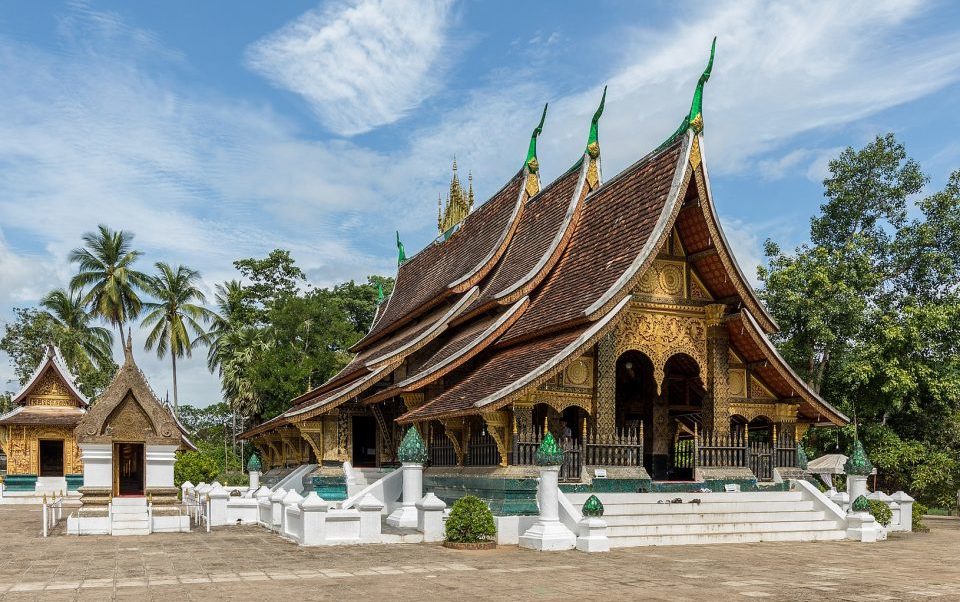Planning a trip to the fascinating city of Luang Prabang? You’re about to discover a world of wonder. Here’s a complete guide for culture and history enthusiasts visiting Luang Prabang.
What to expect
Known for its culture and natural beauty, Luang Prabang is a beautiful town in Laos. Temples and monasteries, known for their beautiful architecture and religious significance, are a crucial part of the city’s identity. The town offers a mix of Lao and French architectural elements, which can be seen in its many preserved ancient buildings. The natural beauty of Luang Prabang is unparalleled – you can relax as well as enjoy a rich cultural experience along the shore of the Mekong and Nam Khan rivers. Meanwhile, the mountains bring you breathtaking views of the area.
When to visit
November to April is the best time to visit. With temperatures exceeding no more than 25 degrees, the dry months bring the best weather conditions to explore the outdoors. January and February are exceedingly popular because of the many local festivals that grace the streets of Luang Prabang. However, from March to May, temperatures can be a bit too much to bear – expect the temperatures to soar above 40 degrees. While the dry months promise you the best experience, don’t expect lower prices. Plus, the dry season sees the largest number of tourists visiting Luang Prabang.
Guided tours
A first-timer in Luang Prabang will benefit greatly from guided tours. They offer an excellent way to explore the city’s culture and history. These tours typically take tourists to cultural and historical sites such as temples and monasteries. To discover the stunning scenery of the riverside, you can join a Mekong River cruise offered by tour operators like Mekong Kingdom. Foodies should consider joining a food tour –some even offer cooking classes. A foodie walking tour is an excellent way to discover food spots and markets located a bit out of the way.
History
The history of this beautiful Laos city goes back to the 8th century. Luang Prabang was originally known as Muang Sua, and it became the capital of the Kingdom of Lan Xang during the 14th century, which was when King Fa Ngum introduced Buddhism to the region. Over the centuries, the city experienced good times and bad times, often as a result of Siam, Burma, and France. During the 19th century, Luang Prabang formed part of French Indochina. All these historical ups and downs have resulted in a blend of fascinating architecture you get to see today. The town’s protected ancient buildings hark back to a time now lost but very much remembered. On account of its rich culture and history, Luang Prabang was given a UNESCO World Heritage site in 1995.
Natural beauty and landscapes
Besides the culture and history that colour the streets of Luang Prabang, there’s something else that makes your visit worthwhile: its natural beauty. The town is home to rivers, mountains, and lush landscapes that will make you want to stick around. Luang Prabang sits where the Mekong and Nam Khan rivers meet, offering you enchanting river views. Mount Phousi is one of the most iconic landmarks – it brings you panoramic views of the city and the surrounding mountains. The Kuang Si Falls is another highlight, which is a multi-tiered waterfall located about 30 kilometres from the city. Hidden within a lush tropical jungle, the waterfall offers you a tranquil escape from the city. Another highlight is the Pak Ou Caves. Located along the Mekong River, these caves hold a vast collection of Buddha statues. Getting here involves a boat ride, which is part of the adventure. For more discovery, venture beyond the limits of Luang Prabang to discover a lush countryside dotted with traditional villages.
Temples and monasteries
Luang Prabang is home to about 30 temples, all steeped in rich history and cultural heritage.
- Wat Xieng Thong: Built in 1560, Wat Xieng Thong is among the most stunning and important. The gold stencilling and the low sweeping roof are the two main highlights. The temple features several chapels, pavilions, and a funerary carriage house.
- Wat Mai Suwannaphumaham: Also known as Wat Mai, this temple is another must-visit. Going back to the 18th century, Wat Mai has a five-tiered roof. Its stunning golden exterior is another highlight. The temple was once home to the head of Laotian Buddhism and still plays a key role in terms of religion.
- Wat Visoun: Built in 1513, Wat Visoun is the oldest temple in Luang Prabang. The blend of Khmer and Lao architectural styles is the main highlight here. Also known as the Watermelon Stupa, the temple grounds feature the That Makmo.
Stay in touch to get more updates & news on Traveler Tweet!




